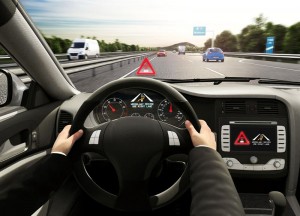[ad_1]
 Hardware and software companies see the connected vehicle as perhaps the most lucrative IoT application, but they know it will be a difficult application to make happen.
Hardware and software companies see the connected vehicle as perhaps the most lucrative IoT application, but they know it will be a difficult application to make happen.
As a result companies such as Microsoft, Google, Bosch, IBM and NXP are working with mobile services companies in an attempt to join the dots on connected cars.
At CES next month Microsoft is working with NXP, IAV, Cubic Telecom, Esri and Swiss Re to demonstrate the concept of automated driving where cloud, artificial intelligence and wireless communications provide personalised in-car driving assistance.
If cars can “talk” to each other they must be able to do it securely.
Security is perhaps the biggest challenge facing the autonomous vehicle ecosystem. As the car becomes more connected, it becomes more vulnerable to attacks.
Companies like NXP will address this with new alliances to develop cybersecurity guidelines for the global automotive industry.
Bosch will present its own conception of the securely connected car at CES 2017.
According to Bosch this car will include:
Face recognition and intelligent personalisation: A driver monitor camera makes face recognition of the driver so the car sets the steering wheel, mirrors, interior temperature, and radio station according to the driver’s personal preferences.
Digital exterior mirrors, now also in the car: The mirror cam system is a camera-based solution that replaces both exterior mirrors. The video sensors can be integrated into the vehicle interior, and images are shown on displays close to the A-pillars on the right and left sides of the car.
Communication between the car and other vehicles and bicycles alerting them to the presence of other road users long before they are in view.
At CES, Bosch is showing a communication link between the new concept car and a bicycle. With it, vehicles can constantly exchange information about their location and direction of travel. This reduces the risk of collision.
Bosch will also demonstrate at CES a retrofittable adapter for the eCall emergency call service. It can easily be placed directly into the cigarette lighter and offers real benefits: An acceleration sensor detects the collision and triggers an emergency call. Via a smartphone app, data on details such as the car’s position are transmitted.
The severity of the impact is also analyzed, and corresponding measures are automatically initiated. If the collision is only of moderate severity, the control center calls to speak to the driver directly and determine whether a service vehicle or ambulance is required. If the driver fails to answer, an ambulance is alerted immediately.
Ultimately the aspiration is that data security will allow encrypted data to be transmitted “over the air” (FOTA) to the vehicle over its life cycle. This will require secure software updates that can be carried out via the cloud.
To achieve this a new level of alliance between software and hardware developers will be required to ensure that fully encrypted communications can provide the security drivers will demand.
[ad_2]
Source link
